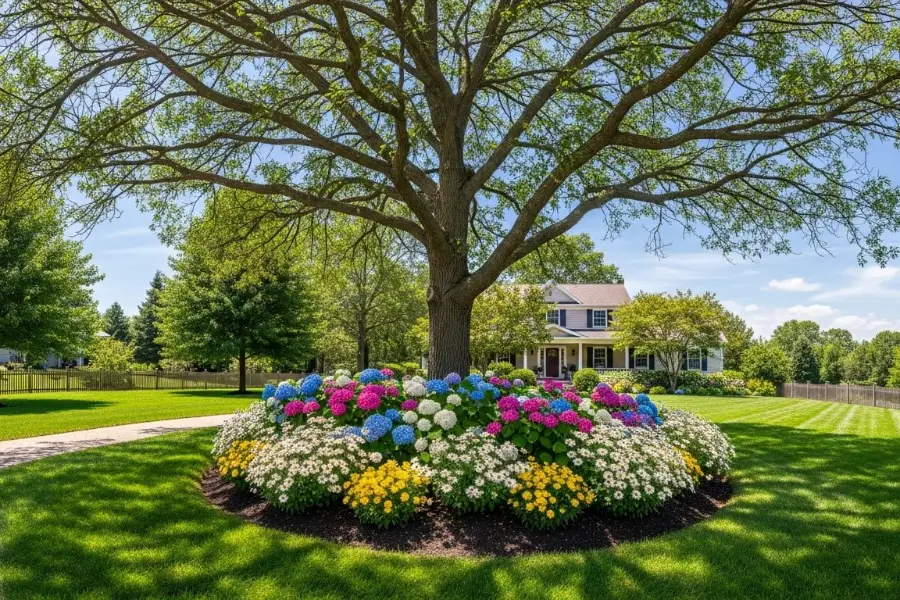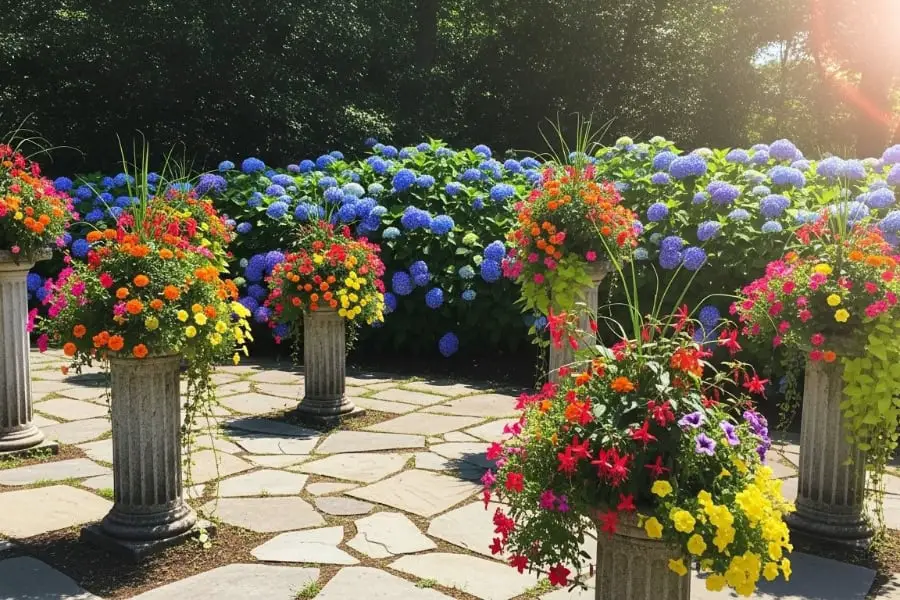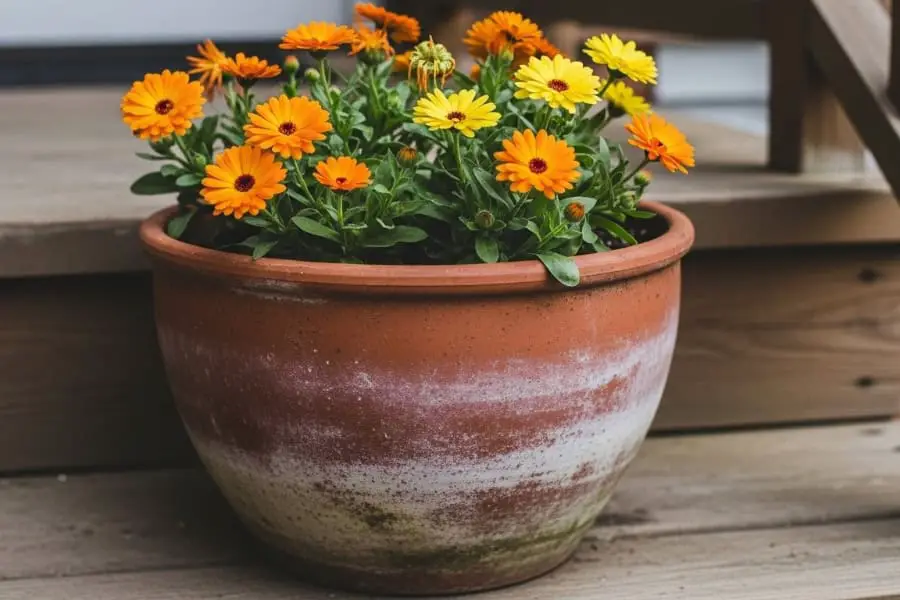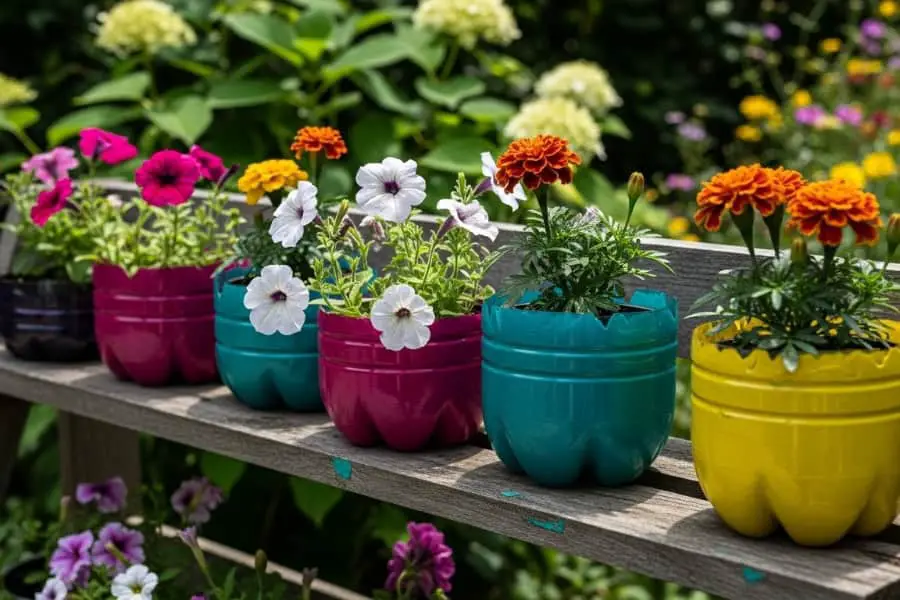Struggling to turn your hydrangeas blue? Did you know that their color is linked to the soil’s pH levels? This guide will help you adjust your soil and create those stunning blue blooms.
Keep reading for easy steps and helpful tips!
Contents
Understanding Hydrangea Flower Color
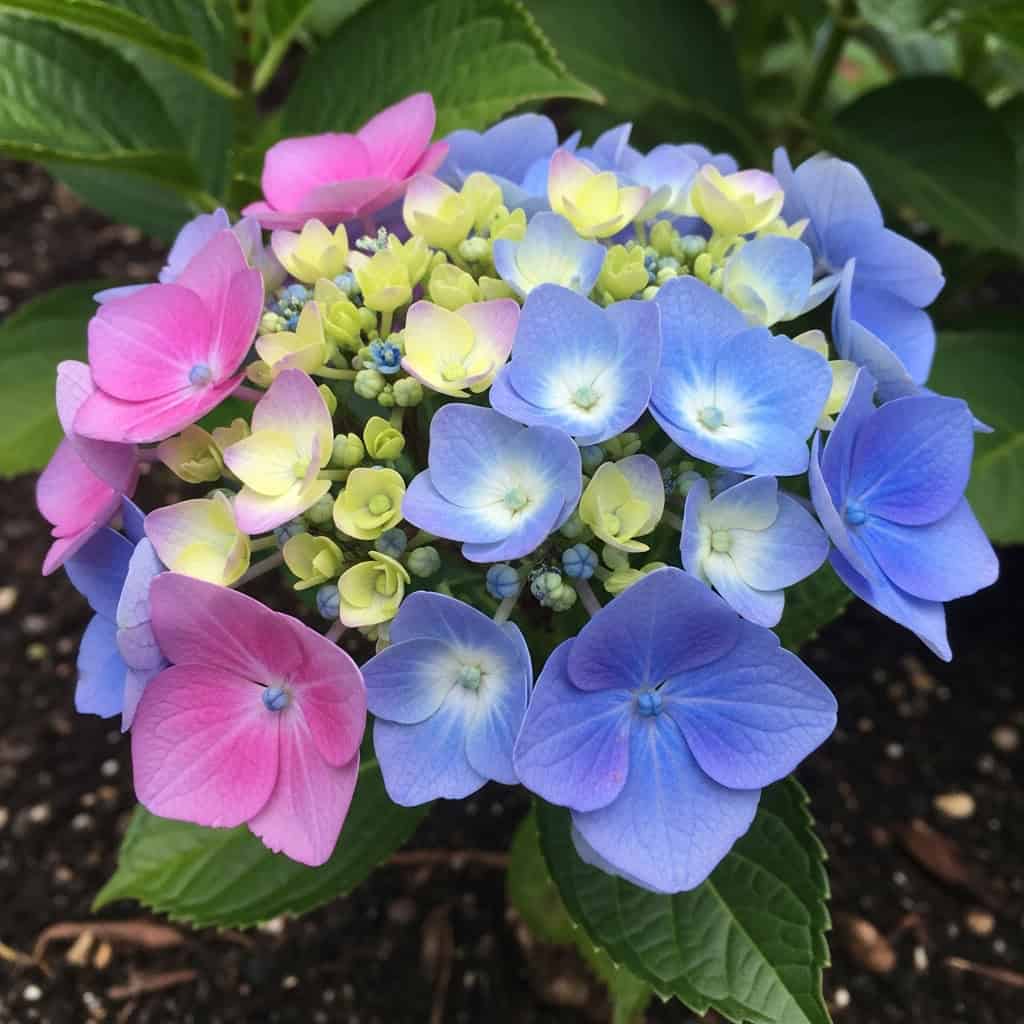
Hydrangea colors depend on soil pH and nutrients. Certain types can shift from pink to blue with the right conditions.
Varieties that Change ColorBig leaf hydrangeas, or Hydrangea macrophylla, can change their flower color. These include types like Nico Blue, Endless Summer, and Endless Summer Twist and Shout. They respond to soil pH changes by shifting hues.
Other kinds, such as Annabelle hydrangeas, do not react this way. Gardeners interested in creating blue blooms must choose a big leaf variety before adjusting the soil.
Testing and Adjusting Soil pH
Find out your soil’s pH to see if it needs changes—this step is key for getting those blue blooms!
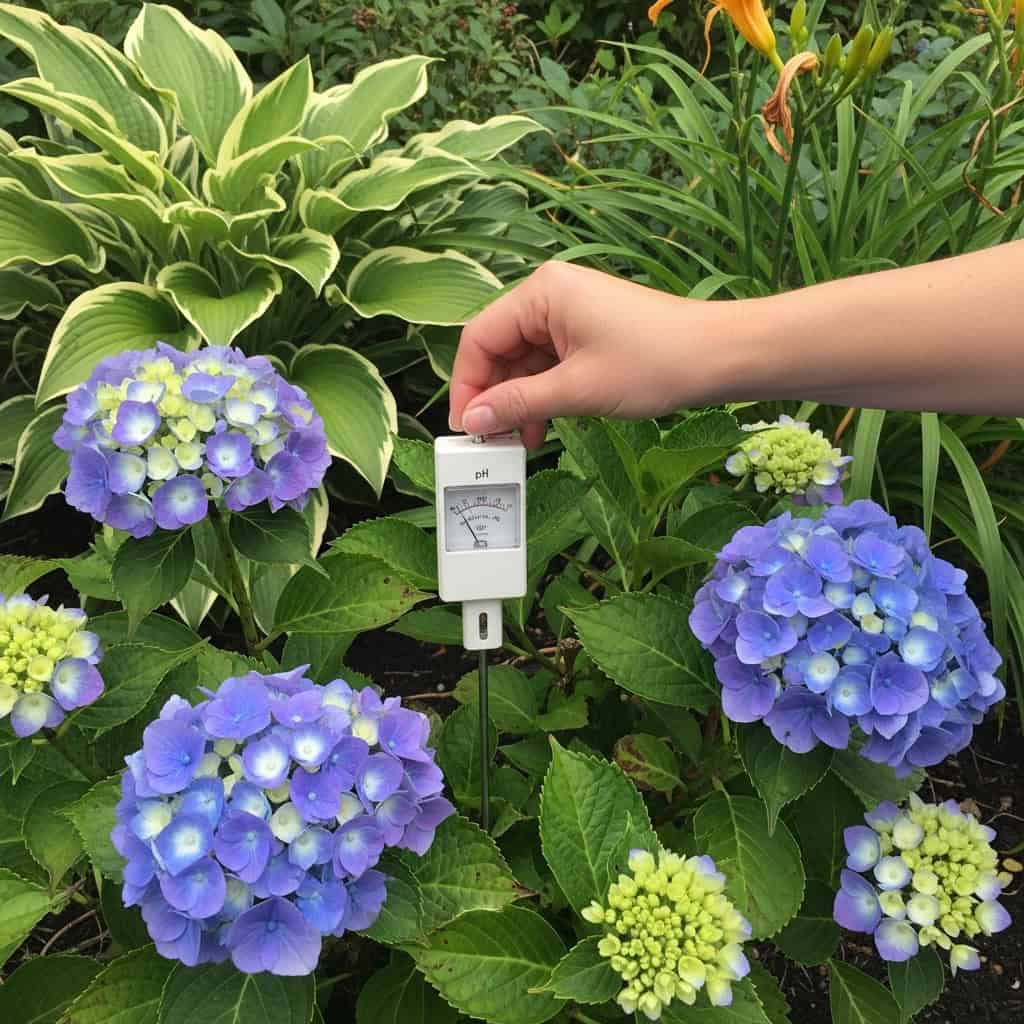
Soil pH Testing Methods
A soil tester gives the best reading of soil pH. It shows how acidic or alkaline your garden soil is on a simple scale. Digital testers can offer quick, accurate results. These tools are helpful for adjusting soil acidity to change hydrangea flower colors.
Another easy method uses vinegar and baking soda. Sprinkle vinegar on dry soil; bubbles mean it is alkaline. Mix baking soda with water and pour it onto the soil; bubbles mean it is acidic.
No reaction means neutral pH. The current flower color can also hint at pH levels… pink for alkaline, purple for neutral, and blue for acidic soils.
Desired Soil pH Levels for Color Change
For blue hydrangea flowers, the soil pH must be 5.5 or lower. This level makes the soil acidic, which boosts aluminum availability for flower coloration. Pink flowers need a higher pH of 6.5 or more, making the soil alkaline.
Purple blooms appear with a near-neutral pH between 5.5 and 6.5. Soil acidity and alkalinity affect nutrient availability and flower color directly. Proper garden management and regular pH testing help maintain plant health and achieve desired hues.
Changing Soil pH for Blue Flowers
Adjust the soil pH to make it more acidic, and watch your hydrangeas gradually change—keep reading to learn how!
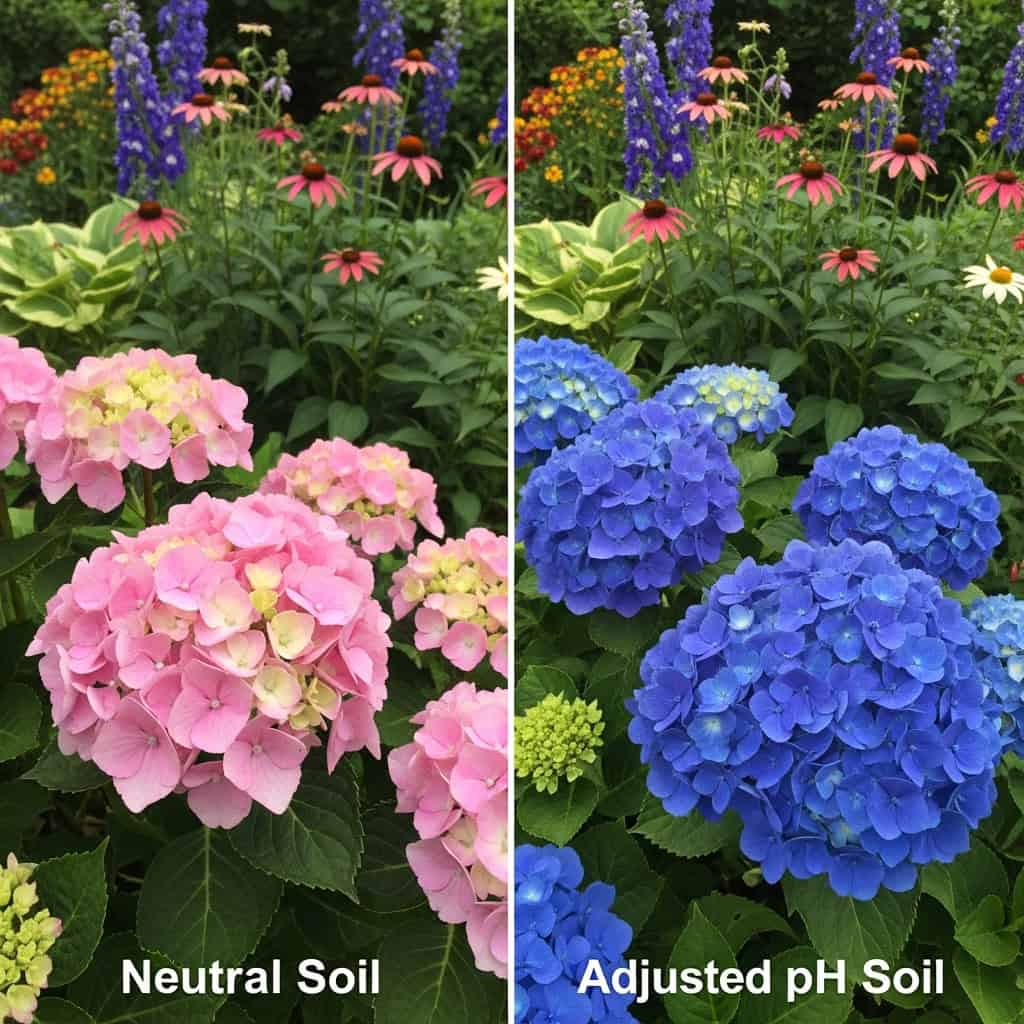
Applying Soil Acidifiers
Soil acidifiers play a big role in turning hydrangea flowers blue. They help lower the soil pH and make nutrients easier for the plant to absorb.
- Add potassium aluminum sulfate to your soil. It helps create acidic soil, which is needed for blue hydrangeas. Use it in small amounts as directed on the product’s label.
- Water deeply after applying the acidifier. This helps it soak into the ground and reach the roots faster.
- Apply acidifiers more than once if needed. It can take time for the soil pH to change enough for flowers to turn blue.
- Check the soil pH often with a test kit or pH meter. Aim for 5.2-5.5, as this range works best for blue blooms.
- Spread organic mulch over the soil like pine needles or shredded bark. This helps maintain acidity while keeping your plants healthy.
- Keep an eye on plant health during this process. If leaves turn yellow or brown, ensure they’re getting proper care and balance of nutrients.
- Always follow safety guidelines when handling chemical products like acidifiers to protect yourself and your garden’s ecosystem.
Patience and Multiple Applications

Applying soil acidifiers takes time to show results. Hydrangea flowers will not change color overnight, as the process depends on steady pH adjustments. If you see pink blooms, it means it’s too late for changes this year.
Start work early for next year’s blooming season.
Frequent treatments may be needed to lower soil pH enough for blue flowers. Regularly test the soil and make small adjustments each time. Be patient with gardening techniques like these, as plants take months to respond fully.
Consistent care ensures better chances of success in achieving your desired flower color over time.
Conclusion
Turning hydrangea flowers blue is simple with the right steps. Focus on soil pH, as it plays a big role in color change. Use acidifiers and test the soil often to track progress. Be patient, as results take time but are worth it for stunning blue blooms.
Enjoy watching your garden transform!
FAQs
1. How can I turn hydrangea flowers blue?
To turn hydrangeas blue, adjust the soil’s pH level to make it more acidic. Add aluminum sulfate or organic materials like coffee grounds to lower the pH.
2. Why does soil acidity affect hydrangea color?
Hydrangeas change color based on soil pH because it controls how they absorb aluminum from the ground. Acidic soil lets them take in more aluminum, turning petals blue.
3. How long does it take for hydrangeas to turn blue?
It can take a few weeks to months for flowers to fully change after adjusting the soil’s conditions. Be patient and keep monitoring your progress.
4. What if my hydrangeas don’t turn blue?
If they stay pink, test your soil again as it may not be acidic enough yet. Keep adding amendments gradually until you reach the right balance for blue blooms!


